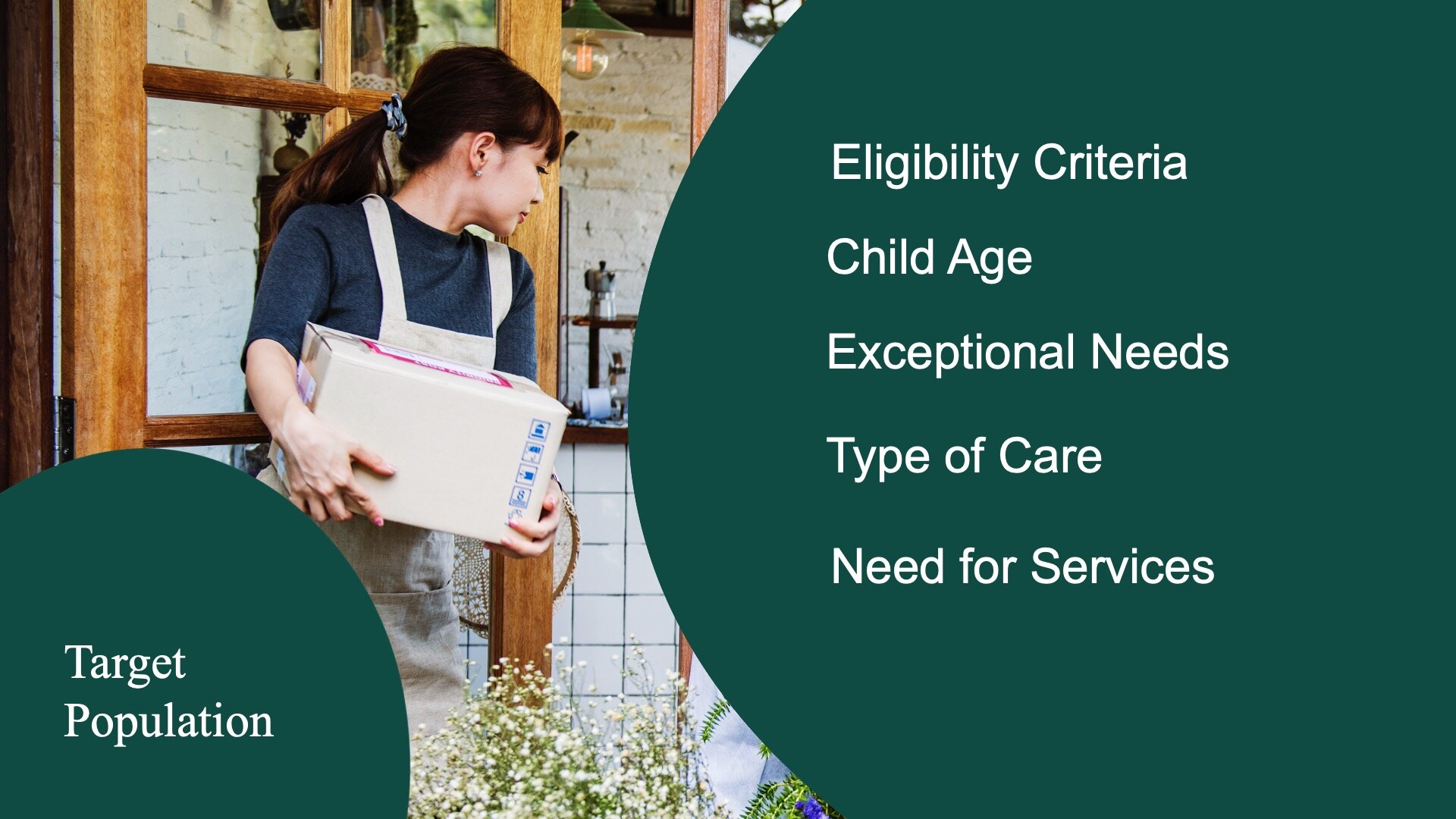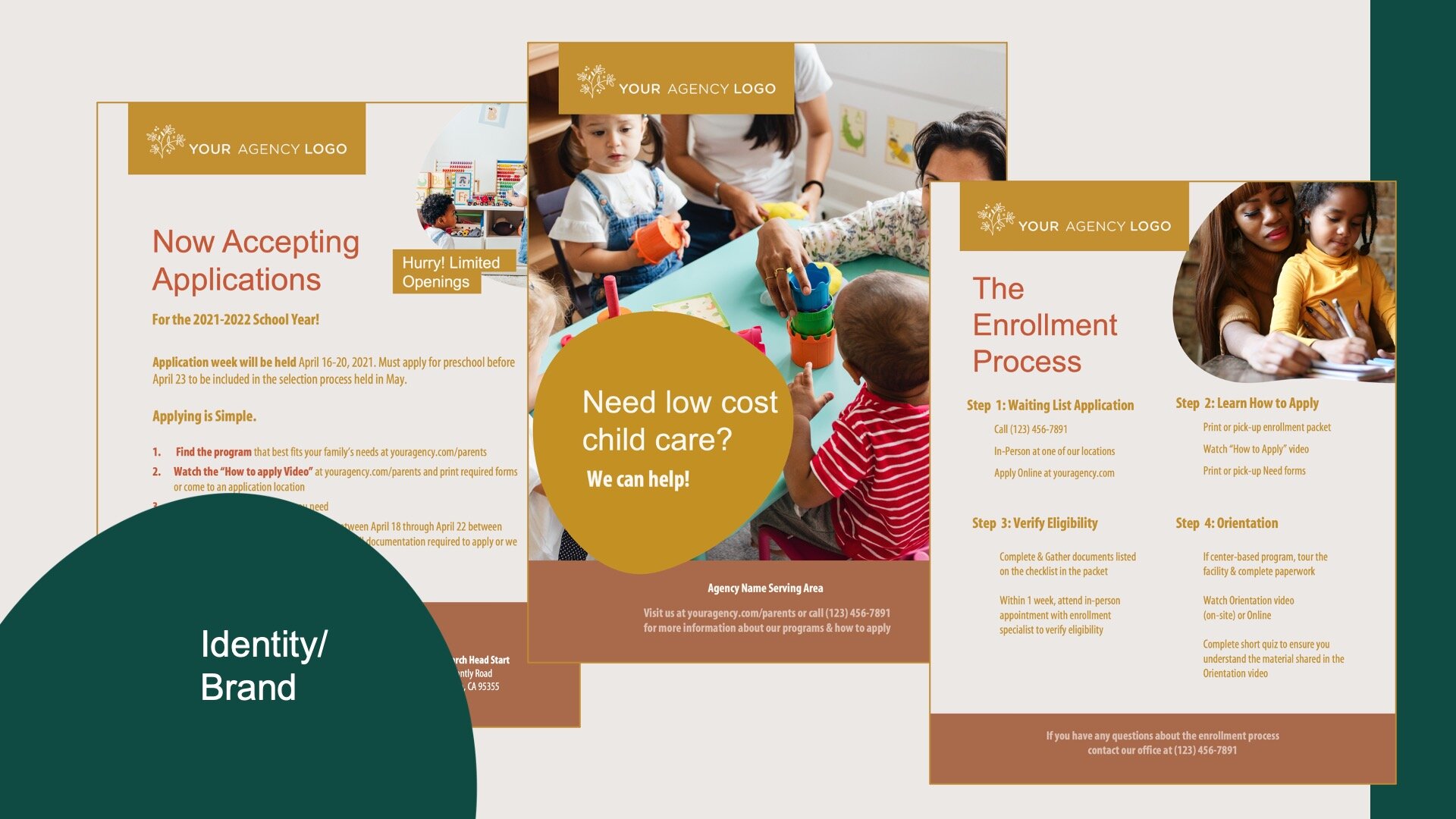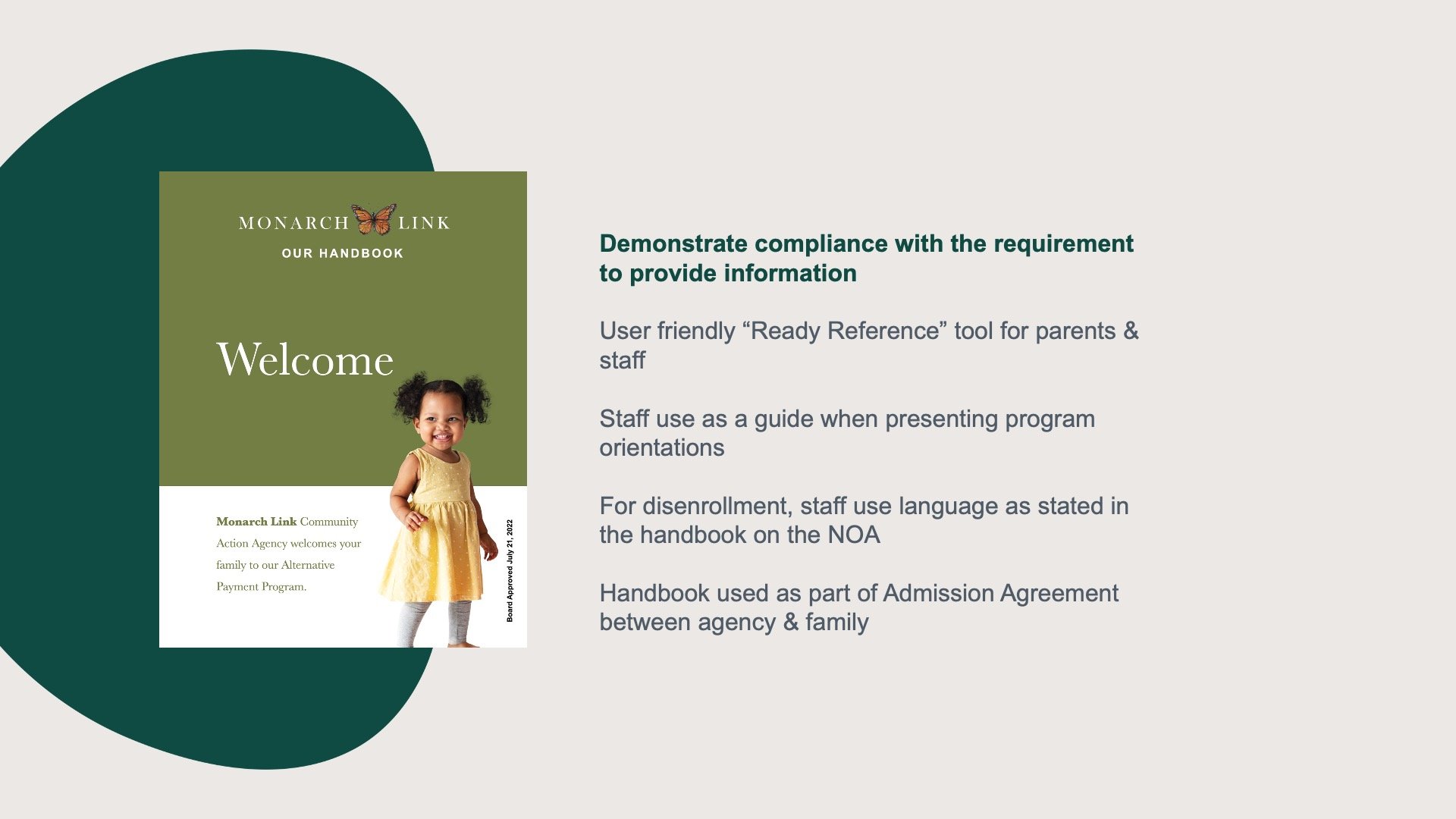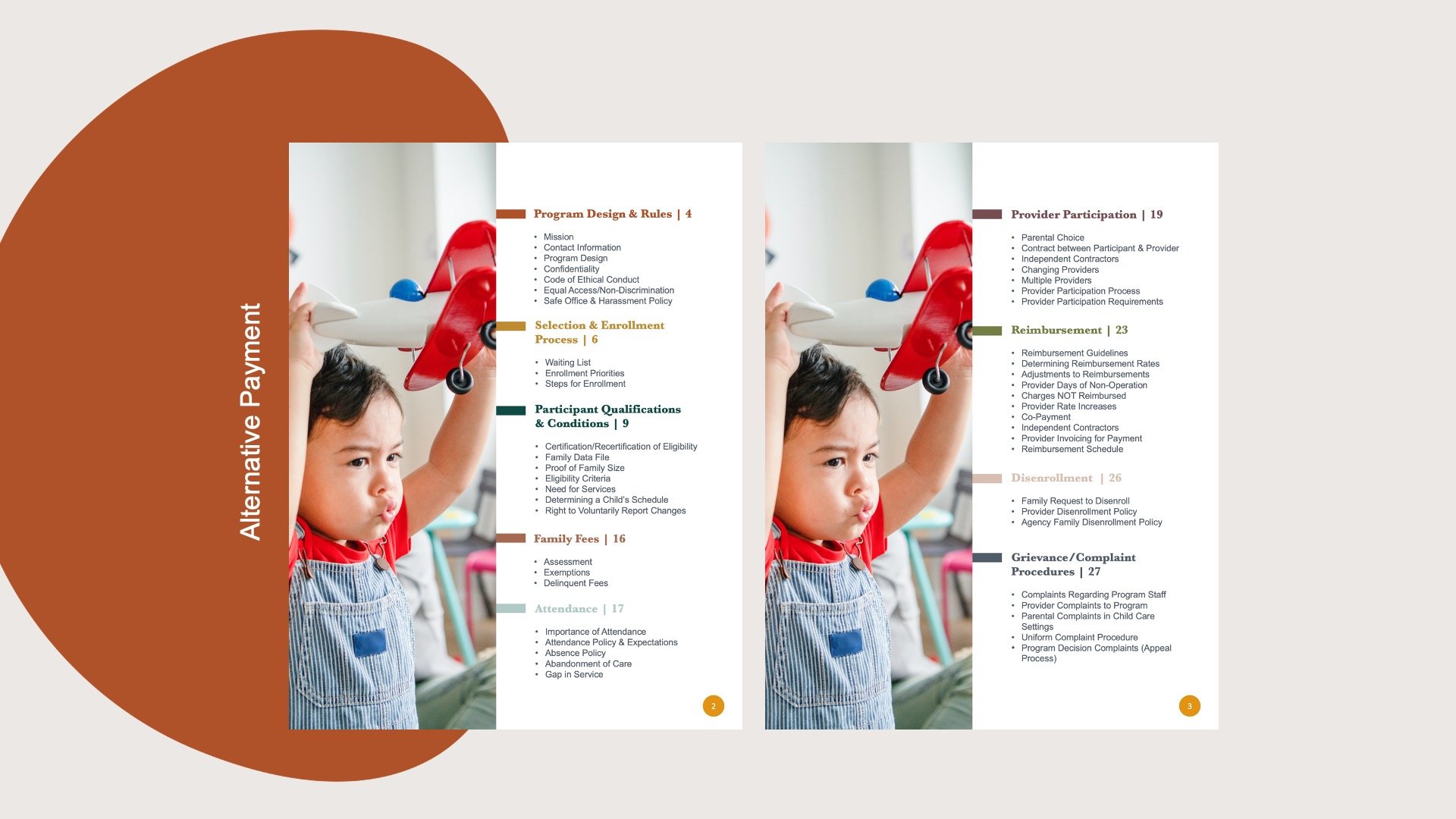Lesson
Dashboard
Lesson 1
Family Selection
Lesson 2
Family Data File
Lesson 3
Attendance
Lesson 4
Provider Participation
Lesson 5
Provider Reimbursement
Lesson 6
Parent Involvement & Education
Lesson 7
Health & Social Services
Lesson 8
Site Licensure
Lesson 9
Adult-Child Ratios
Lesson 10
Environment Rating Scale
Lesson 11
Nutritional Needs
Lesson 12
Desired Results Profile & Data
Lesson 13
Qualified Director
Lesson 14
Staff Development/Provider Support
Lesson 15
Refrain from Religious Instruction
Lesson 16
Inventory Records
Lesson 17
Annual Evaluation Plan
Lesson 18
Fiscal Essentials: CFCC Contract Type
Lesson 19
Fiscal Essentials: CCTR Contract Type
Lesson 20
Audits
Lesson 21
CDMIS 801A & 801B Reporting
Lesson 22
Contractor Policies
Compliance Indicator
Contractors shall develop written policies and procedures. Written information shall be provided to families, providers, and the general public. The written policies and procedures may not be in conflict with law, regulations, and terms of the contract.
Regulations/Reference
CCD Program Instrument: IV. Administrative CCD 20
Title 5: 18222, 18224 & 18105 Funding Terms & Conditions: FY 2023-2024
Monitoring Review Evidence
Written Information for Families and/or Providers, as applicable
Evidence may be:
Handbooks
Postings
Webpages
Other written materials
Watch Video Lesson ❯
Sample Forms/Tools ❯
Review Sketch Pad Notes ❯
Consumer Education
Information
The regulations state that contractors are required to provide information to parents & providers that includes:
Written grievance procedures for parents & providers
Parent & Provider Participation policies & procedures
Written materials for providers
Written materials for parents
What this might look like in a program:
An agency might include written grievance procedures along with parent & provider participation policies & procedures within the participant handbook.
Information may also be provided through a parent orientation video or Powerpoint that takes new enrollees through the polices & procedures to participate.
Identifying Your Target Population
Understanding your target population & the variables that directly impact your target population are critical components in identifying what your community needs are & how your program can design services that cater to the unique needs of your target population.
Contractors should start by looking at the Funding Terms & Conditions that outline target population details such as:
Eligibility criteria for children & families
Child Age
Exceptional needs
Types of care available
Need for services
Marketing/Recruitment Strategies
Contractors should consider how the target population might drive their agency’s marketing & recruitment plan.
Within your marketing efforts, contractors need to figure out two “who’s;”:
Who will be in charge of facilitating the marketing efforts
Who is the audience you are trying to reach.
Timing of your advertising should be strategically planned, especially prior to any mass enrollment time periods. Families walking or driving by should clearly understand how to apply for your program, whether it be a telephone number, a mass application date, website to refer to or walk-in. Think about when you will be posting content over social media, sending flyers home at schools, attending meetings at the local child protective services department or foster care programs, colleges and so on.
Where you are posting content is becoming increasingly important too. Demographics are a key factor in determining the where. The term demographics refers to a statistical analysis of people or a group. It enables an organization to find the group of people who fit the mold of the ideal customer or target population. Demographics finds those people.
Identity/Brand
To support your marketing strategies, agencies need to have attractive marketing materials. Consider how you will inform parents throughout the community regarding the services available, as required in the regulations.
Using simple, welcoming marketing tools help attract families & it informs them of your core services that are uniquely designed to meet your community’s need.
Creating an INCREDIBLE Parent Handbook
What’s the objective?
If you are in the beginning stage of writing or updating your parent handbook, it is recommended that your team takes a moment to determine what the main objectives of your parent handbook are.
Use these as your rules, so that when someone sways throughout the rewrite process, there is an agreed upon point to come back to.
Your audience for the purpose of writing the parent handbook are families. For subsidized programs, the families we serve come from our target population driven from the eligibility criteria defined in the program specific funding terms and conditions.
Careful attention should be considered when writing and designing a parent handbook if this is our audience.
“Musts & Wants” to include
When determining what stays, what goes and what needs updated, it can truly be an overwhelming experience.
One of the first steps is to organize. Determine the handbooks major headings followed by subheadings.
The process…..
Every incredible handbook starts with a plan to initially develop & a plan for ongoing maintenance. If your current handbook needs a lot of TLC, you will need to have a “one time event/project” to move from step 1 through step 4.
Step 1 through 4 is where you are building your base for an incredible handbook. Step 5, will be your ongoing process.
Complete Knowledge Check ❯
After reviewing the video lesson & sketch pad notes, it’s time to check for understanding by completing a Knowledge Check. Note that Individual Knowledge Checks will conclude with a Certificate.











